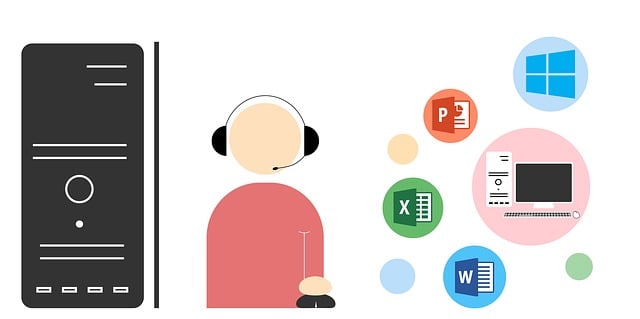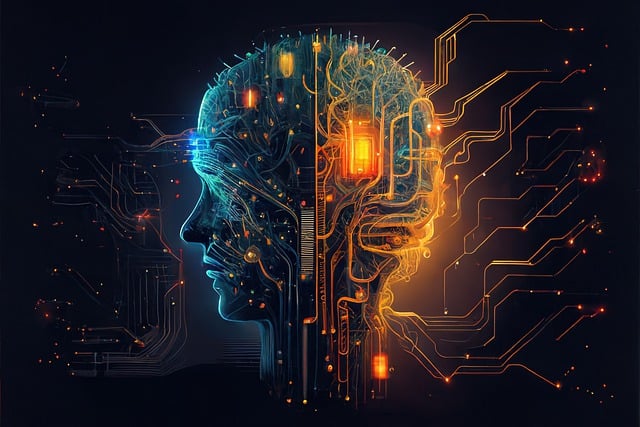In today's digital world, effective communication support is crucial for success. Advanced software leveraging NLP and ML technologies revolutionizes interaction by breaking language barriers, offering personalized assistance, enhancing collaboration, and improving accessibility across global teams. This technology adapts to individual needs, facilitates inclusive discussions, and streamlines workflows through integrated AI-powered translation, transcription, and search capabilities. AI assistants will further enhance communication efficiency and inclusivity in personal and professional settings.
In today’s fast-paced digital landscape, seamless communication assistance is crucial for navigating complex information ecosystems. This article explores the growing need for intelligent software that provides robust support, enhancing productivity and user satisfaction. We delve into the benefits of streamlined communication, key features driving advanced communication tools, and the strategic use of AI for efficient help systems. Additionally, we discuss future trends shaping communication assistance technology, underscoring its importance in our interconnected world.
- Understanding the Need for Intelligent Communication Support
- Benefits of Seamless Communication Assistance
- Key Features of Advanced Communication Software
- Implementing AI for Efficient Help and Support
- Enhancing User Experience through Personalized Support
- Future Trends in Communication Assistance Technology
Understanding the Need for Intelligent Communication Support

In today’s fast-paced and increasingly digital world, effective communication is not just a nicety but a necessity. The need for intelligent communication support has become more pronounced as our professional and personal lives become ever more interconnected. Whether it’s coordinating global teams, facilitating inclusive conversations, or ensuring accurate information dissemination, traditional methods often fall short. This gap highlights the crucial role that intelligent software can play in enhancing communication support.
By leveraging advanced technologies like natural language processing (NLP) and machine learning (ML), intelligent communication tools can streamline workflows, bridge linguistic barriers, and foster a more inclusive environment. They offer personalized assistance, enabling users to express themselves more clearly, interpret complex messages accurately, and collaborate effectively despite time zones and cultural differences. In essence, these innovations are transforming the way we communicate, making it seamless, efficient, and accessible to all.
Benefits of Seamless Communication Assistance

Seamless communication assistance software offers numerous benefits, enhancing productivity and connection in both professional and personal settings. By providing real-time language translation, speech-to-text transcription, and text-to-speech conversion, this technology breaks down language barriers, ensuring effective communication among individuals with diverse linguistic backgrounds. Such tools are invaluable for global teams collaborating on projects, facilitating inclusive discussions, and fostering a more connected work environment.
Moreover, intelligent communication assistance software adapts to individual user needs, offering personalized support. It learns from user interactions, improving accuracy over time and providing tailored suggestions. This level of adaptability not only streamlines tasks but also empowers users with disabilities, enabling them to communicate more efficiently. Ultimately, these benefits contribute to improved collaboration, enhanced accessibility, and a more inclusive digital landscape.
Key Features of Advanced Communication Software

Advanced communication software offers a myriad of features designed to enhance productivity and accessibility. Key among these is support for multiple platforms and devices, ensuring users can connect seamlessly across desktops, tablets, and smartphones. This cross-platform compatibility streamlines workflows by enabling team members to participate in discussions and collaborate on projects from any location.
Another standout feature is the integration of support tools like AI-powered language translation, real-time transcription, and advanced search capabilities. These tools facilitate global communication by breaking down language barriers, making meetings and conversations more inclusive. Additionally, they improve accessibility for individuals with disabilities, ensuring everyone can actively participate in digital interactions.
Implementing AI for Efficient Help and Support

Implementing Artificial Intelligence (AI) has revolutionized support systems, offering efficient and immediate assistance to users. AI-powered software can understand and interpret user queries, providing tailored solutions in natural language. This technology ensures that help desks are equipped to handle a vast array of issues, from simple FAQs to complex problem-solving, thereby reducing response times and increasing customer satisfaction.
By leveraging machine learning algorithms, these systems continuously learn and adapt to new patterns, improving their accuracy over time. This proactive approach enables anticipatory support, where software can predict potential problems and offer solutions before they escalate, enhancing overall user experience and streamlining support processes.
Enhancing User Experience through Personalized Support

In the realm of communication assistance, intelligent software offers a transformative experience by providing personalized support tailored to individual users. This advanced technology goes beyond generic solutions, recognizing that every user has unique needs and preferences. By leveraging machine learning algorithms, the software adapts to users’ behaviors, language patterns, and communication styles, offering a dynamic and intuitive assistance system.
Personalized support enhances user experience by anticipating their requirements. The software can suggest relevant information, format messages according to user preferences, or even predict and complete sentences, thus streamlining communication processes. This level of customization ensures that users receive tailored assistance, fostering more efficient and enjoyable interactions, whether in professional settings or personal exchanges.
Future Trends in Communication Assistance Technology

The future of communication assistance technology looks promising, with advancements set to transform how humans interact and collaborate. Intelligent software is evolving rapidly, leveraging natural language processing (NLP) and artificial intelligence (AI) to provide sophisticated support. These tools can anticipate user needs, offer contextual suggestions, and even adapt to individual preferences, making everyday communication more efficient and effective.
One trend is the integration of AI assistants into various platforms, enabling seamless interactions across devices and languages. As technology advances, these assistants will become increasingly context-aware, understanding nuances and cultural differences. This evolution promises to bridge communication gaps, support diverse user needs, and foster more inclusive and productive conversations in both personal and professional settings.






